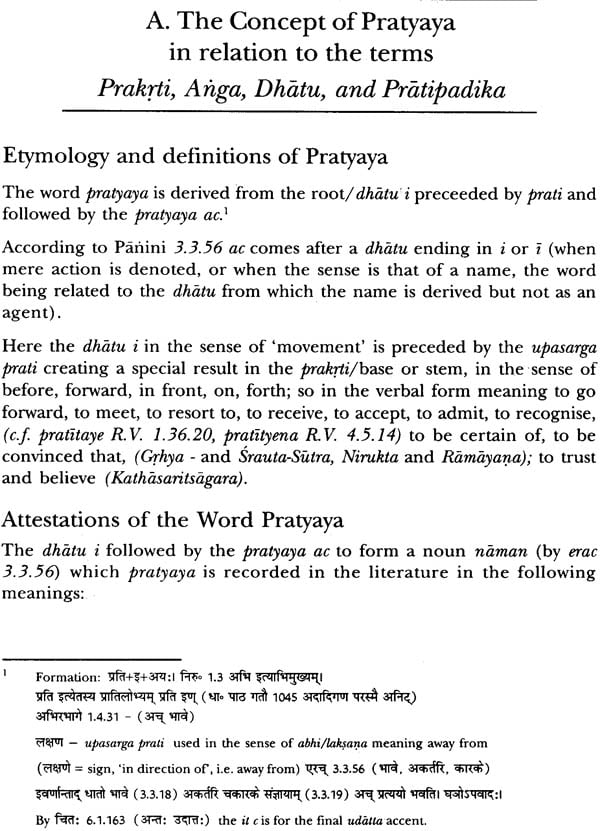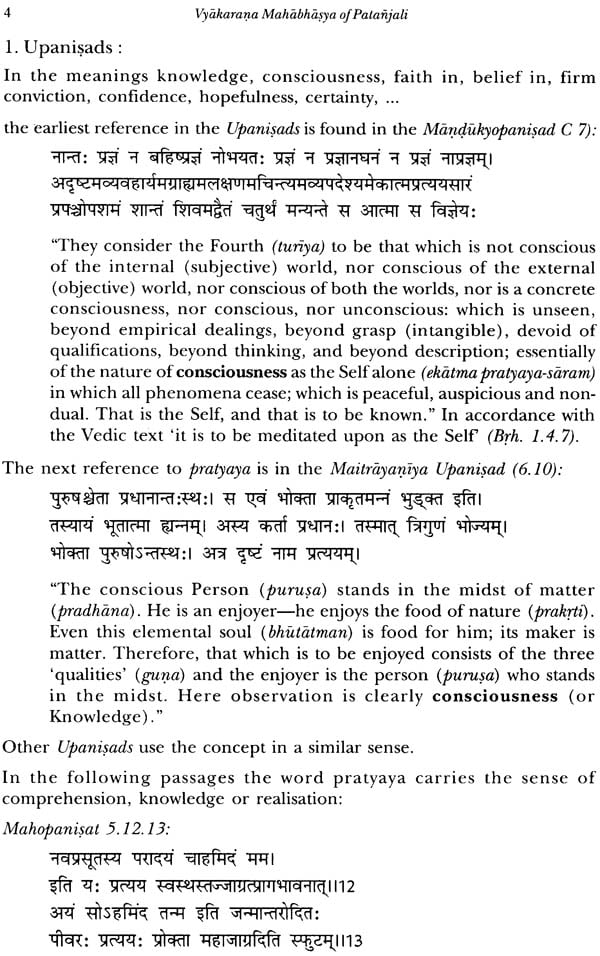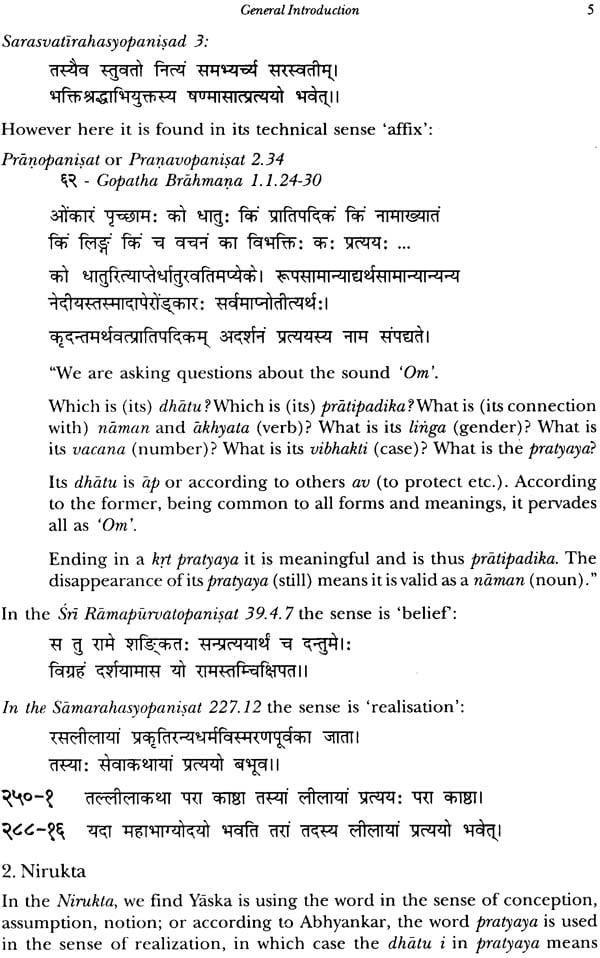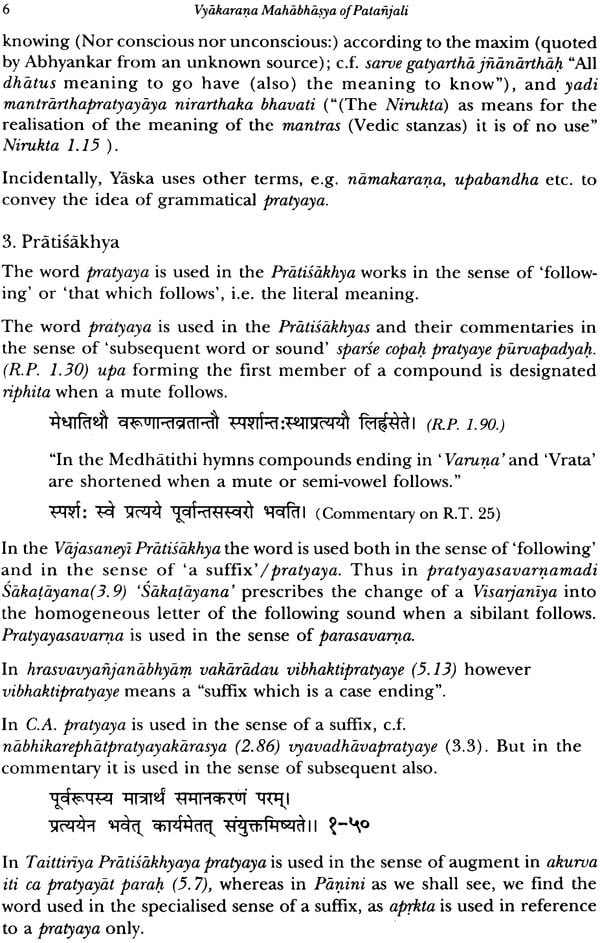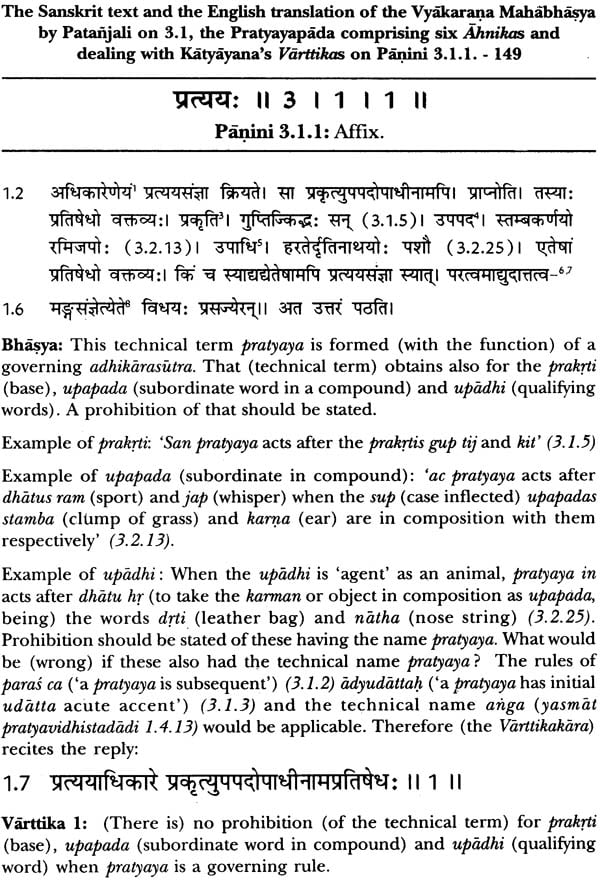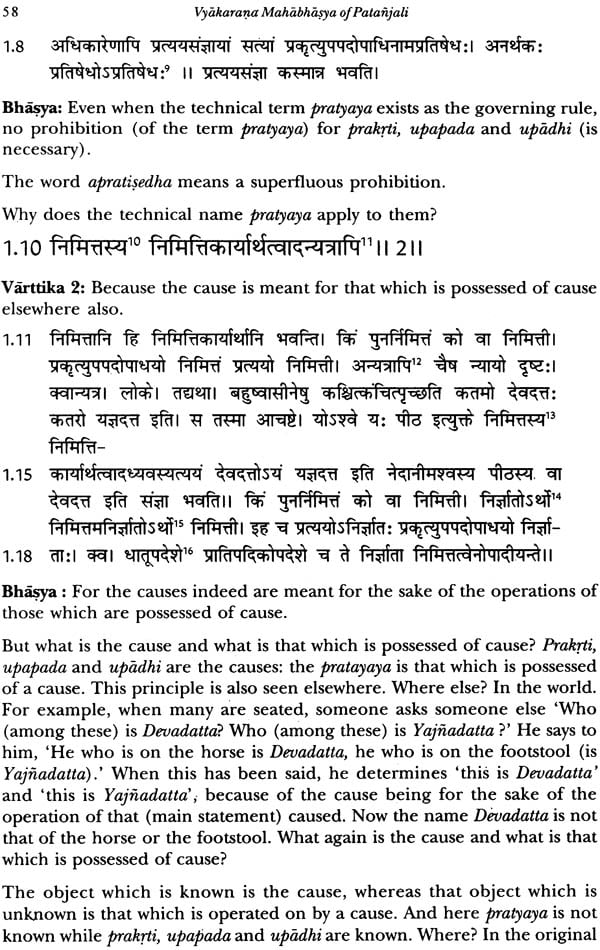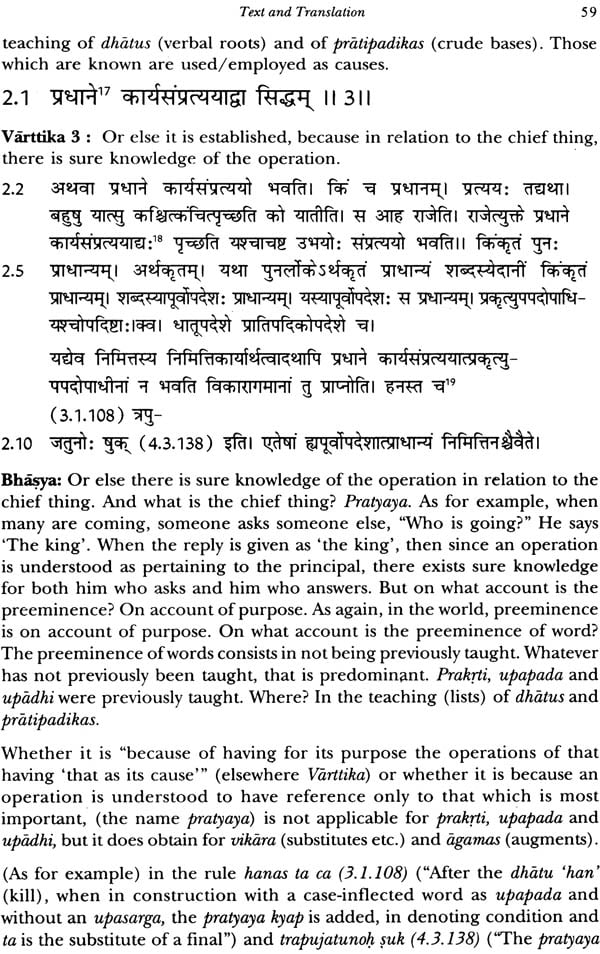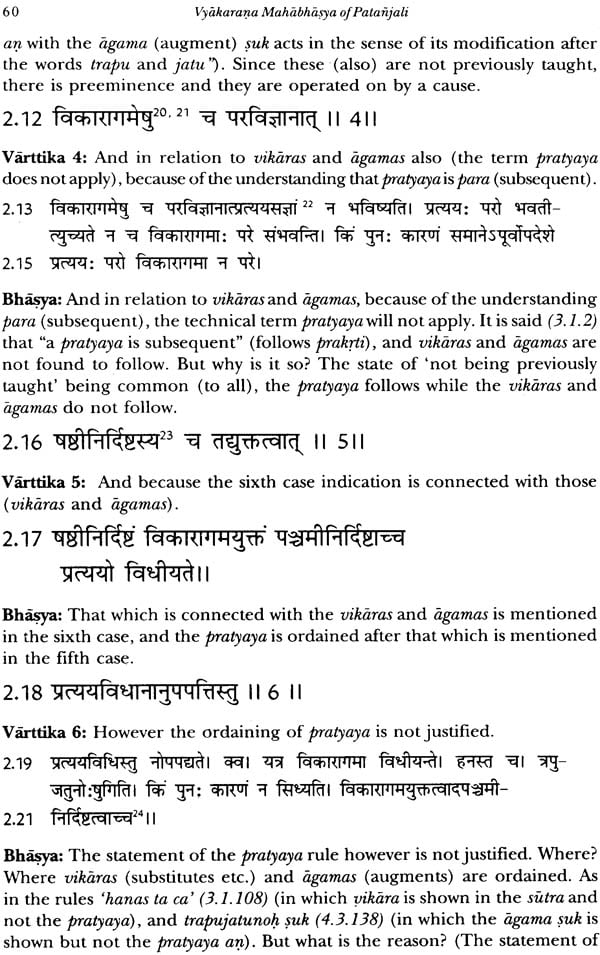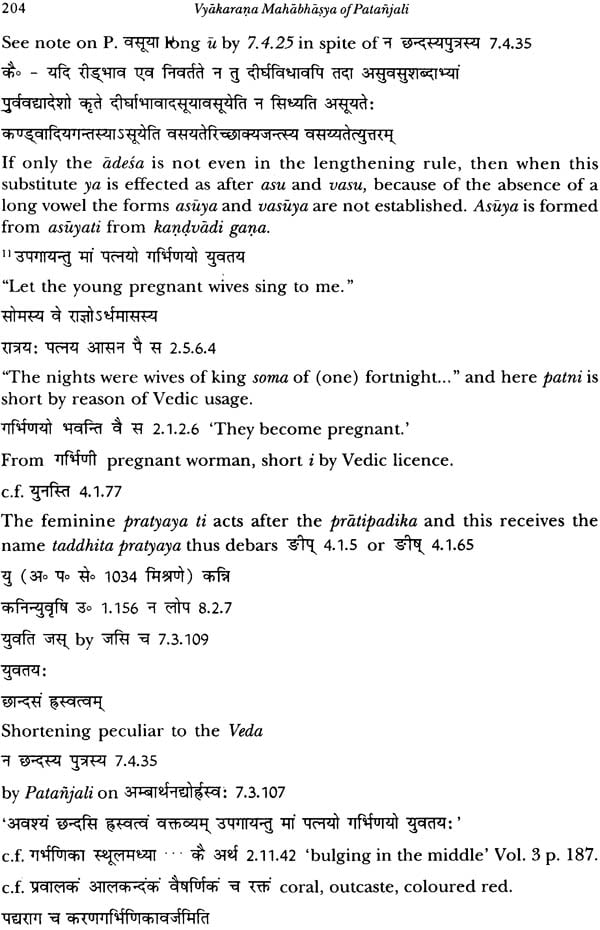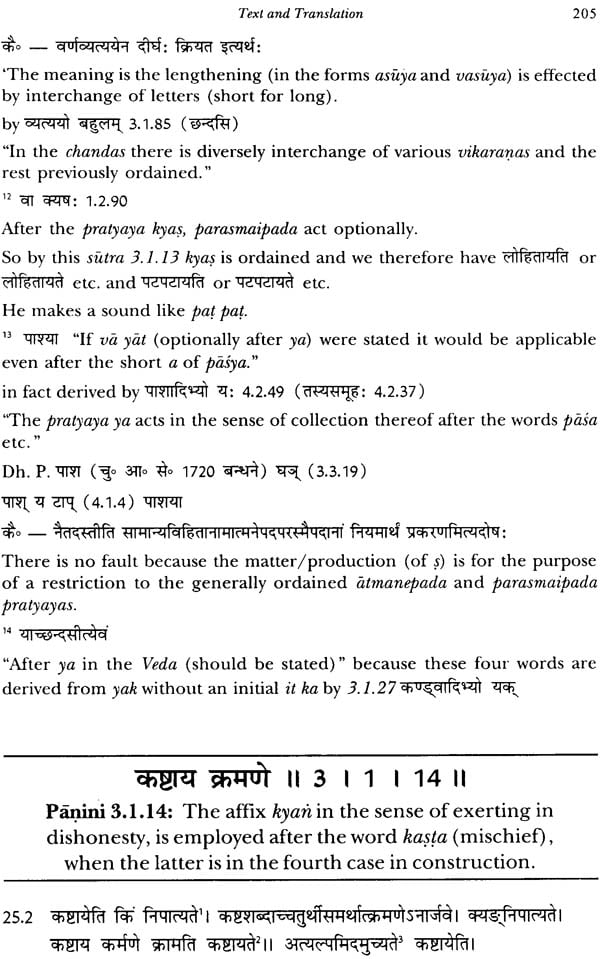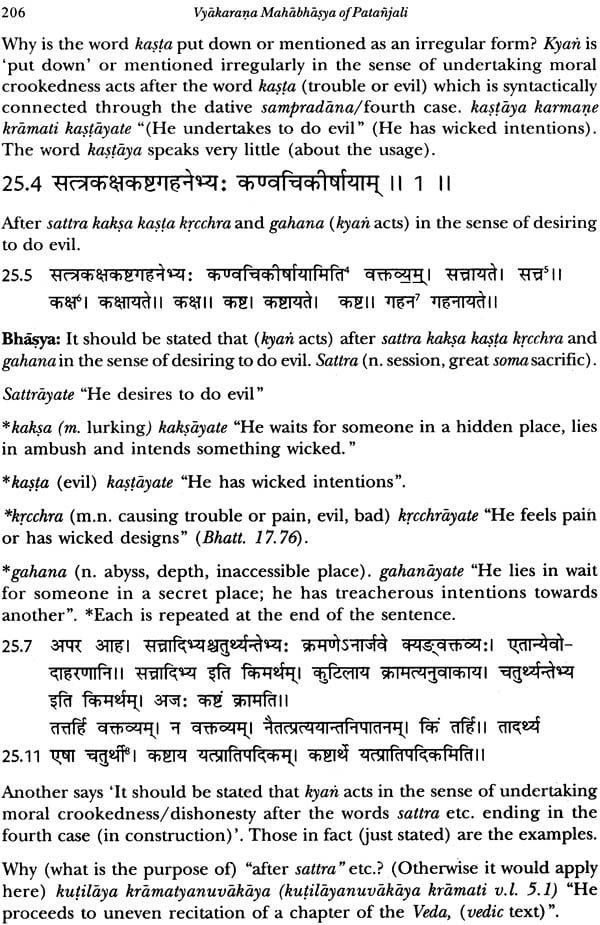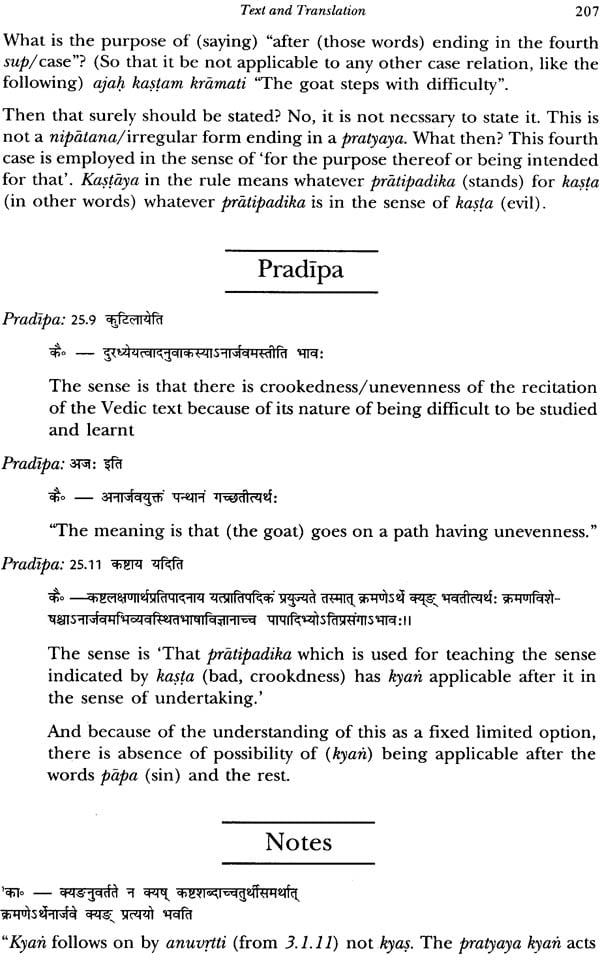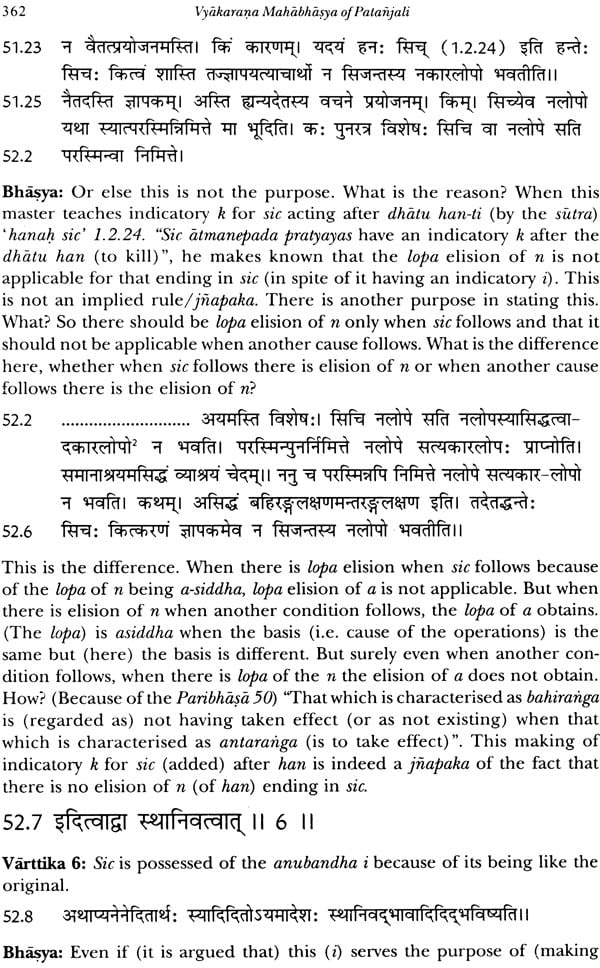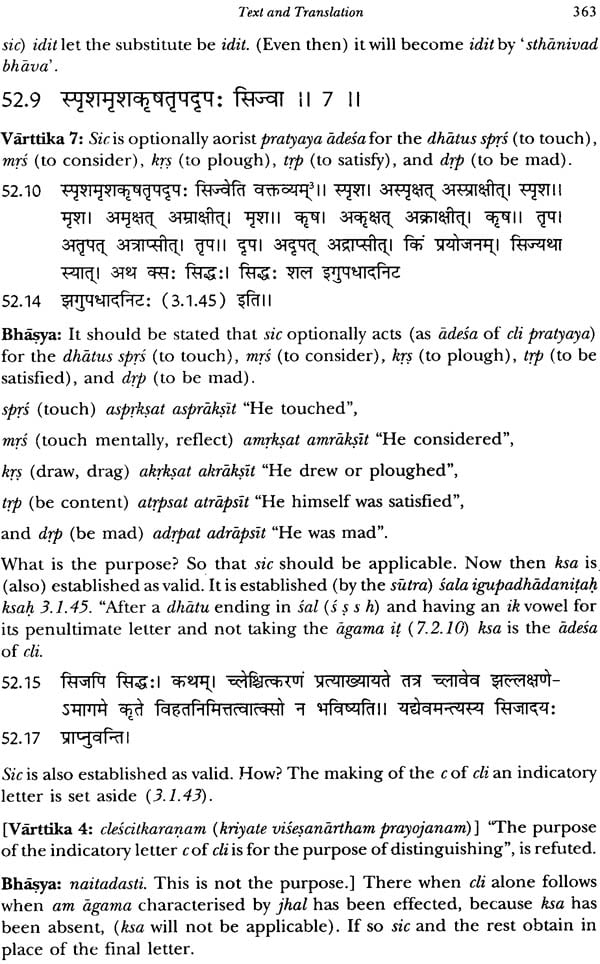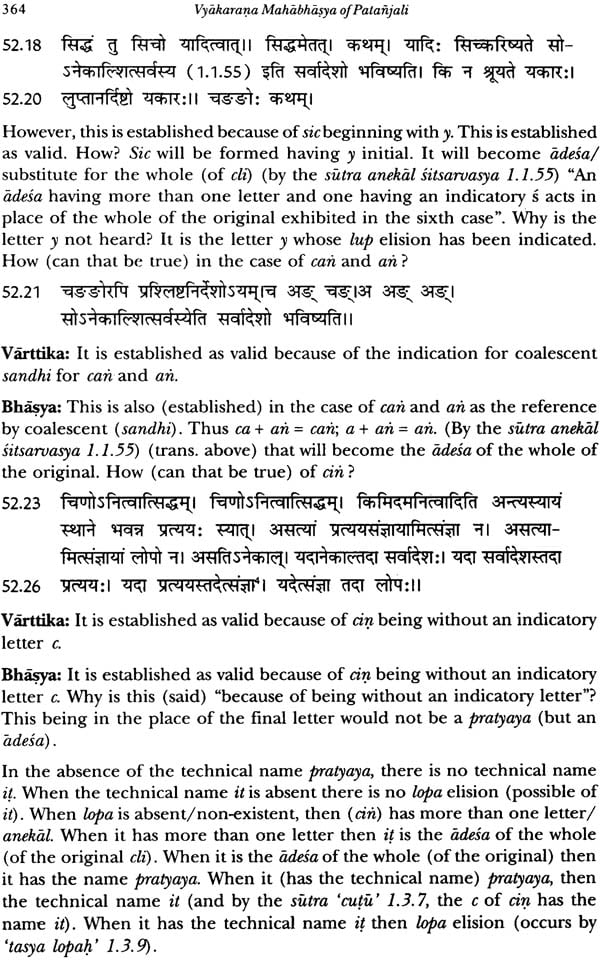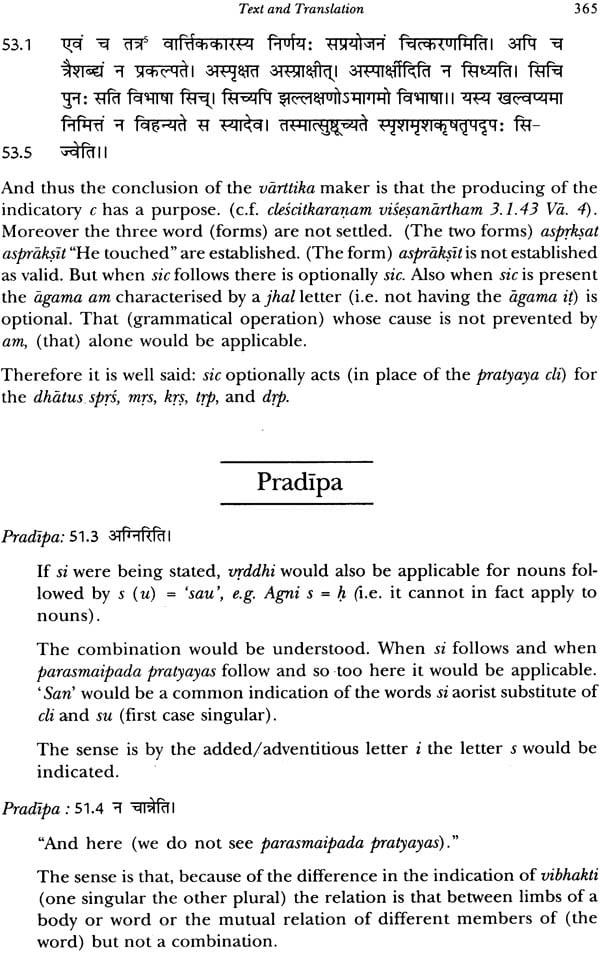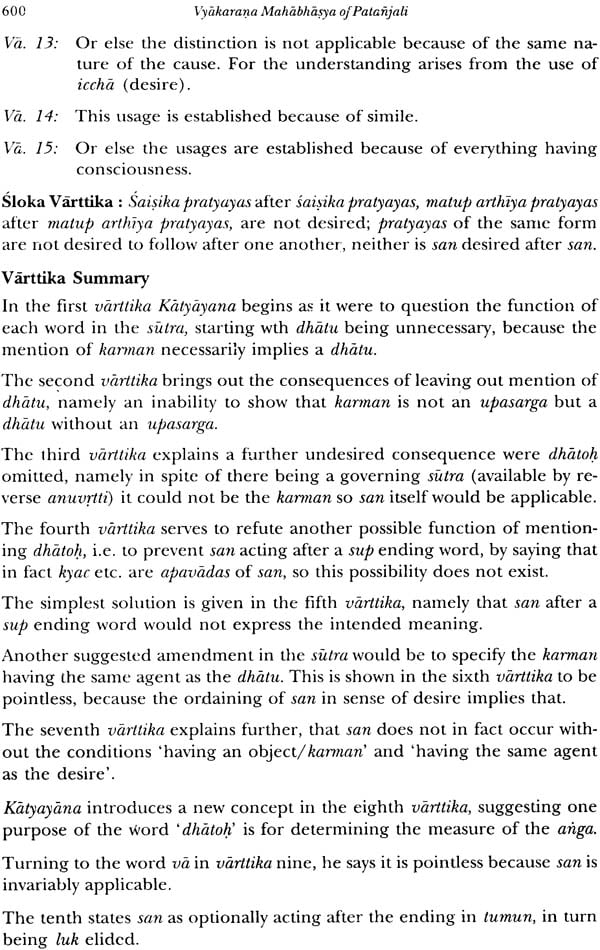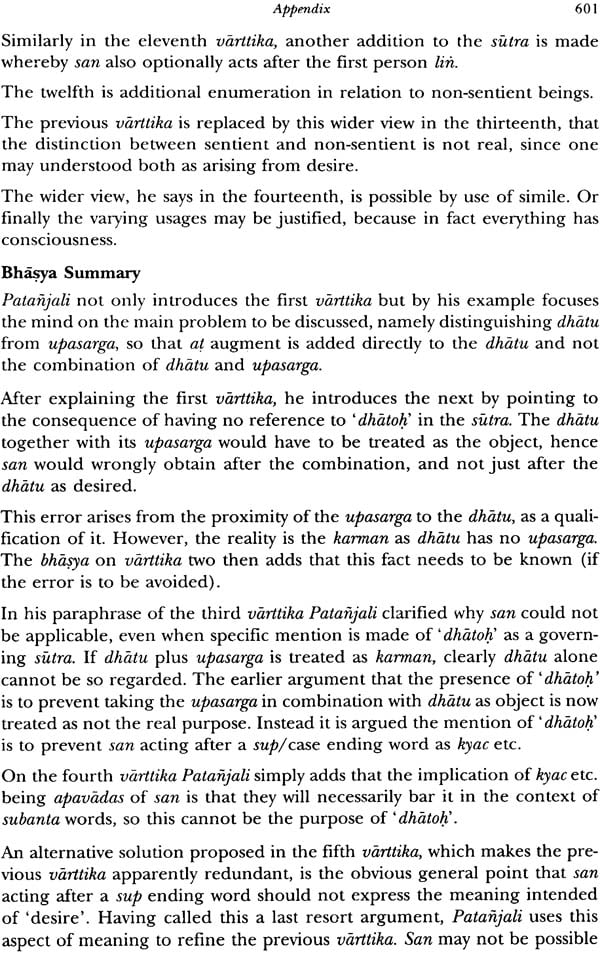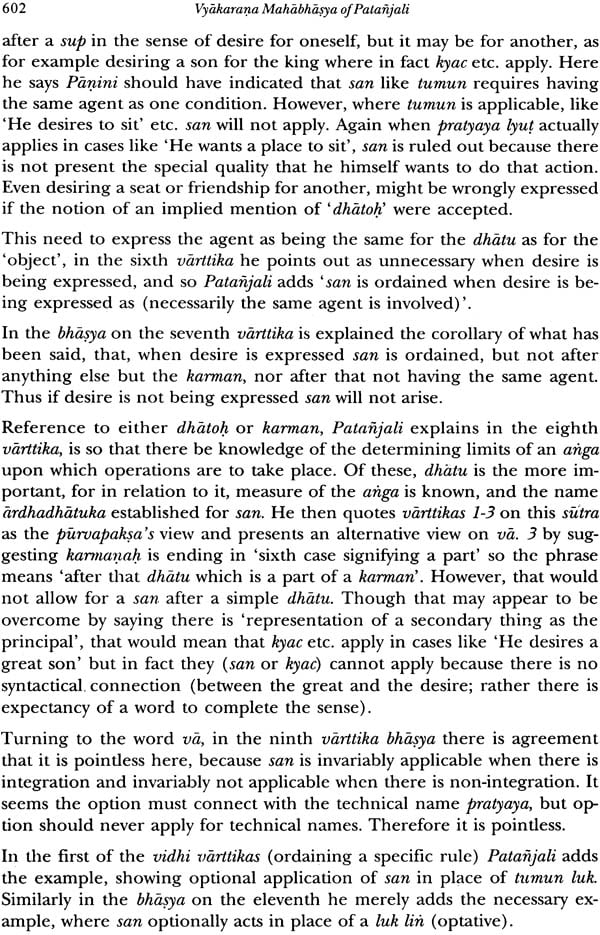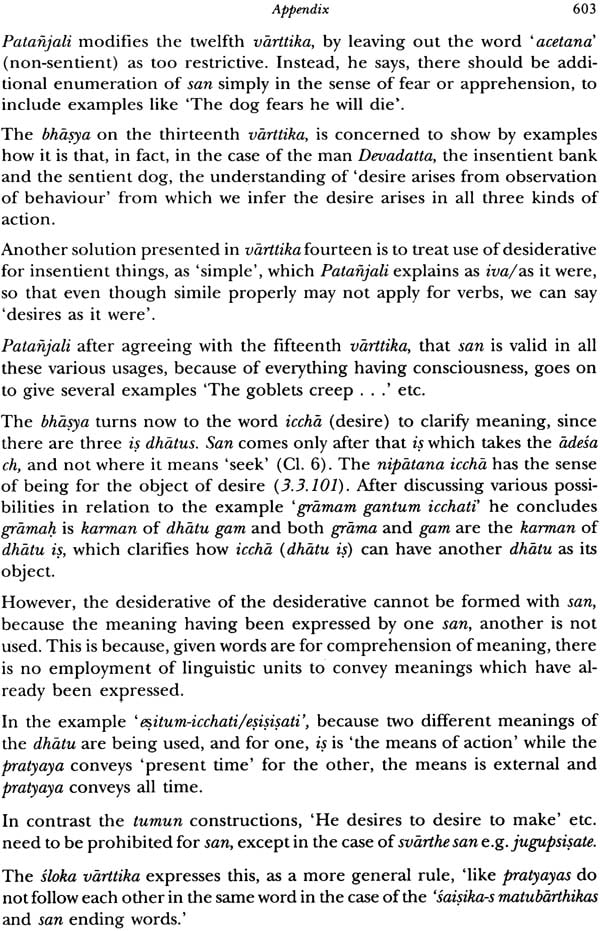
Vyakarana Mahabhasya of Patanjali On Panini 3.1 (Ahnikas 1to 6)
Book Specification
| Item Code: | IHL065 |
| Author: | Stephen Peter Thompson |
| Publisher: | Motilal Banarsidass Publishers Pvt. Ltd. |
| Language: | (Text Translation with Introduction and Technical Notes) |
| Edition: | 2010 |
| ISBN: | 9788120834446 |
| Pages: | 679 |
| Cover: | Hardcover |
| Other Details | 9.7 Inch X 7.5 Inch |
| Weight | 1.30 kg |
Book Description
At the heart of Panini’s great Astadhyayi lies the concept of Pratyaya Being by far the largest adhikara sutra governing the three central adhyayas of the Astadhyayi and Virtually half the sutras. This in itself bears witness to the importance of the concept in language. Indeed it has been said that to understand the word one needs first to understand the relation between the stem which is known and he pratyaya which is unknown but joins the stem to bring forth the meaning of the whole word.
This book contains a comprehensive treatment of pratyaya including its etymology pre Paninian and post Paninian attestation and a thorough analysis of different categories of Pratyayas in the Astadhyayi. The translation of the six Ahnikas of the Bhasya which cover the first section of the third chapter is more literal and faithful to the text. Dr. Thompson has added critical notes which are very useful to understand the text and its context. At the end there is an attempt to uplift the linguistic notion of pratyaya to a higher spiritual level.
The Rev’d Dr. Stephen Thompson studied in pune at the centre of Advanced Sanskrit studies under the great Vaiyakarana Pandit Bhagavat Shastri with guidance from Dr. S.D. Joshi, Dr. S.D. Laddu and Dr. Saroja Bhate, Dr. Thompson began the study of Sanskrit having first completed a BSc in Sociology and the a BD in Theology at king’s college, London followed by four year Sanskrit at the school of oriental and African studies where he began research on the creative word in east and west om logos and Dabar. His studies and teaching at the school of economic science and the school of oriental and African studies London gave him profound insight into the Sanskrit language.
He currently teaches Sanskrit at Middlesex University College of Ayurveda and the school of Economic science while practicing as a non stipendary priest in Sunbury where he lives with his wife Linda who is an Ayurvedic practitioner with an MSc in Ayurveda.
The unique importance of the Paninan tradition of Sanskrit Grammar and its place in the grammatical literature of the world need not be articulated since it has been sufficiently highlighted. The position at the top occupied by Patanjali the author of the Vyakaranamahabhasya within the Trimuni tradition of the Paninian school also has been an accepted fact. A complete translation of this magnum opus in any Indian (except Marathi) or non Indian language has been a strongly felt desideratum. Apart from Dr. S.D. Joshi and Dr. A.A.F Roodborgen who translated some important sections of the bhasya we do not come across any other attempt to undertake this Herculean task. The present book which attempts the first translation in English of one of the largest sections of the Bhasya is indeed a praiseworthy effort.
The concept of pratyaya is one of the seminal concepts in Panini’s met language. It is in fact one of the two building blocks and as pointed out by the author of this book lies at the heart of Panini’s Grammar. Patanjali writes in colloquial Sanskrit and in dialectical style. A good translation of his text is therefore a challenging task the author of this translation deserves our compliments fro accepting the challenges and for having accomplished the task.
These books contains a comprehensive treatment of pratyaya including its etymology, pre- Paninian and post Pannian attestations and a through analysis of different categories of Pratyayas in the Astadhyayi the translation of the six Ahnikas of the Bhasya which cover the first section of the third chapter is more literal and faithful to the text. Dr. Thompson has added critical notes which are very useful to understand the text and its context. At the end there is an attempt to uplift the linguistic notion of pratyaya to a higher spiritual level. This is in consonance with the Indian tradition of learning with a three fold approach to reality abhibhautika adhidaivika and adhyatmika.
The Sanskrta language is acknowledge to have the finest and oldest grammatical system in the world today besides possessing an incomparable literature. Hence for understanding the nature of language and of the word itself it becomes imperative to study the greatest authorities on Sanskrta Grammar, Viz, panini karyayana and patanjali.
At the heat of panini’s great Astadhyayi lies the concept of pratyaya being by far the largest adhikara sutra, governing the three central adhyayas of the Astadhyayi and virtually half the sutras. This is itself bears witness to the importance the word one needs first to understand the relation between the stem which is known and the pratyaya which is unknown but joins the stem to bring forth the meaning of the whole word.
Thus this thesis focuses on the first and most important pada within the province of the Pratyaya Adhikara the Pratyayapada with a view to shedding some light on the concept of Pratyaya and indirectly in the world itself.
| Foreword | vii |
| Preface | ix |
| Bibliography | xi |
| Detailed contents Index | xv |
| Part One : General Introduction | |
| A. The concept of Pratyaya | 3 |
| B. Uses of the Pratyaya in Panini’s | 19 |
| C. Nine Major Types of Pratyaya | 23 |
| Part Two : Text and translation | |
| A Note on the Translation | 53 |
| The Sanskrit text and the English translation of the Vyakarana Mahabhasya by Patanjali on 3.1 the Pratyayapada Comprising six Ahnikas and dealing with Katyayana’s Varttikas on Panini 3.1.1 - 149 | 57 |
| Part Three : Appendix | |
| Technical Notes | 571 |
| Summary | 579 |
| Conclusion | 581 |
| Precis of Mahabhasya | 585 |
